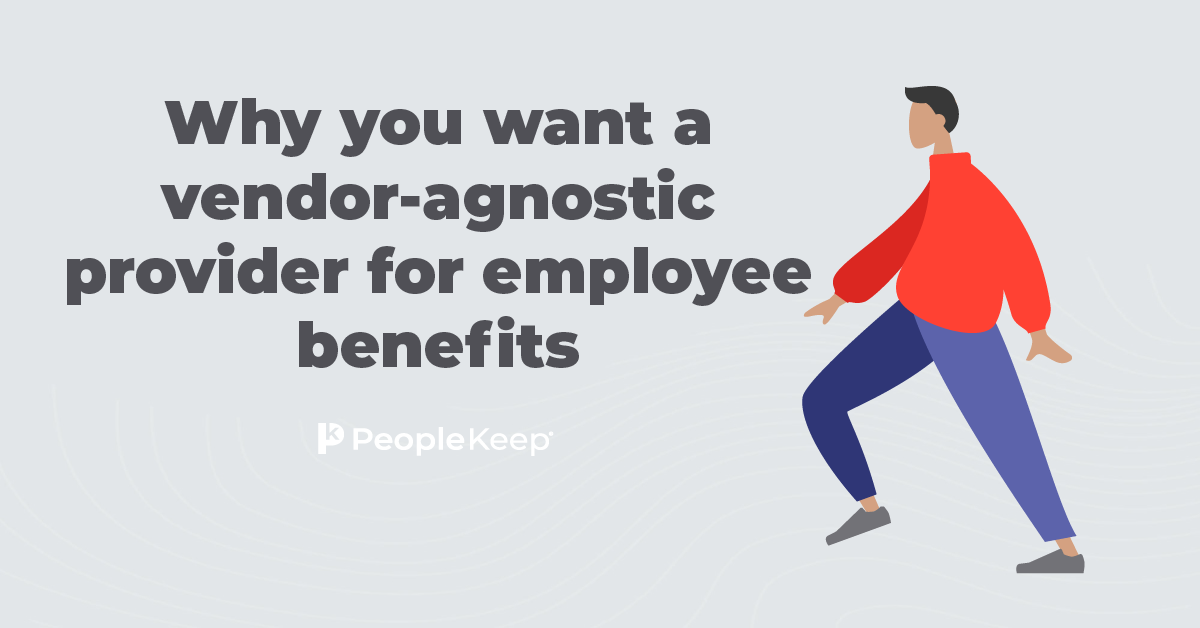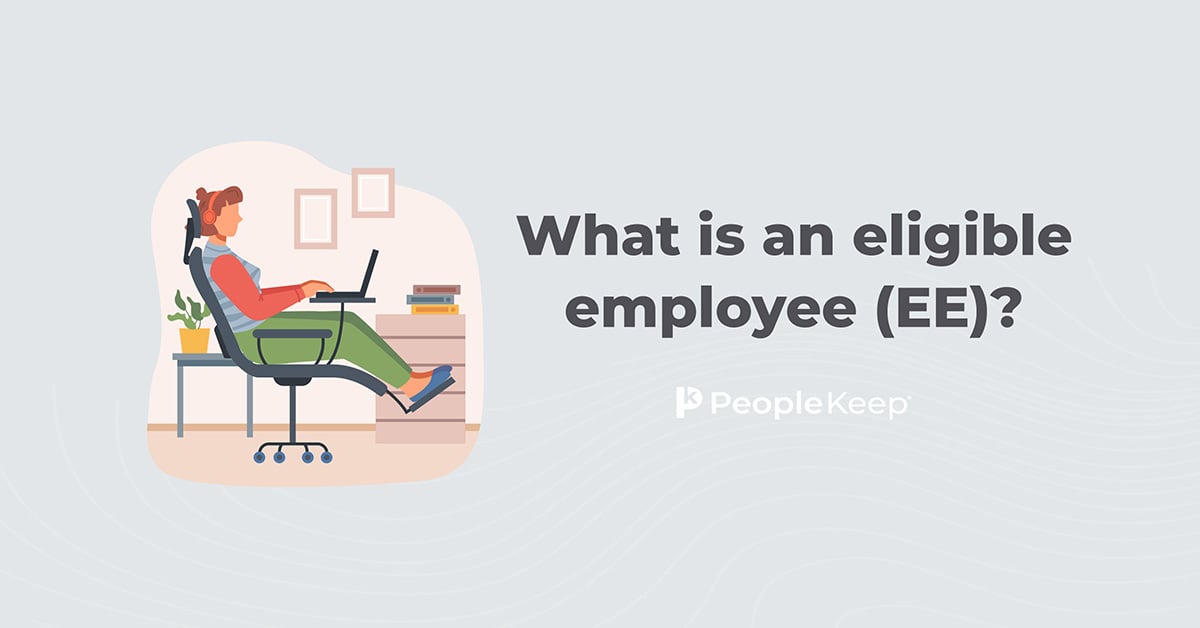How to establish an IRA plan for your employees
By Chase Charaba on August 9, 2022 at 8:19 AM
When it comes to attracting and retaining employees, your benefits package is a top deciding factor for job prospects when looking for a new employer.
One of the most important benefits employees look for from their employer is a retirement benefit. Many types of employer-sponsored retirement plans are available, including 401(k)s and pensions.
However, one of the most common ways to invest in your employees' retirement is by offering an individual retirement account (IRA) with contributions from your organization, your employees, or both.
In this article, we'll look at the most popular types of IRAs, why you should offer one, and what other benefits you should consider as part of your benefits package.
Why offer an IRA to your employees?
Workplace retirement plans remain one of the most popular employee benefits available.
Research for the 2021 Robert Half Salary Guides1 reveals that a retirement savings plan is in the top five most common benefits offered by employers in the U.S.
Additionally, PeopleKeep's 2022 Employee Benefits Survey Report found that 87% of employees surveyed value retirement benefits or retirement accounts, yet only 54% of employers offer it.
Retirement plans aren't only crucial for your older employees; many younger employees also value retirement savings. Our benefits survey found that 83% of Gen Z employees ranked retirement benefits are very or extremely important, while 86% of Baby Boomers voted the same.
Offering a retirement plan is a great way to boost your employee benefits package and increase employee satisfaction, which can lead to increased productivity and employee retention.
What types of IRAs are available?
Now that we've explained why a retirement savings program is important for your organization, let's discuss the most popular types of IRAs.
There are three types of IRAs that business owners can use to encourage workers to save for retirement:
- A payroll deduction IRA
- A simplified employee pension
- A savings incentive match plan for employees
We'll cover each type in more detail in the sections below.
Payroll deduction IRAs
First, let's start with payroll deduction IRAs. These are an excellent choice for employers who want to help employees save for retirement but may not have the budget to make plan contributions.
As the name suggests, IRA contributions through payroll deduction are made solely by the employee as a deduction from their paycheck. Each employee gets to decide how much of each paycheck they would like to contribute to their IRA, so long as they don't exceed the contribution limits.
For 2022, the maximum contribution limit is $6,000 (or $7,000 for investors at least 50 years old). Payroll deduction IRAs feature low administrative costs, and there's no minimum number of employee participation requirements or mandatory annual filing with the government.
Even if only some of your employees are interested in making IRA contributions through payroll, you must make the option available to everyone.
If you choose to set up a payroll deduction IRA, you have two options:
- Traditional IRA
- Roth IRA
Traditional IRA
A traditional IRA is a retirement savings plan that provides an upfront tax break. Contributions to a traditional IRA are made before the deduction of taxes, so the earnings on the amount in the IRA aren't taxed until the money is taken out.
Employees can withdraw money from their traditional IRA without penalties if they’re at least 59 and a half years old. However, generally speaking, anyone younger than 59 and a half is subject to a 10% early withdrawal penalty if they take any funds out of their account.
Roth IRA
A Roth IRA differs from the traditional IRA in that its contributions are made with money that has already been taxed. Also, qualified distributions after retirement are free of income tax.
One of the best benefits of a Roth IRA is that no taxes are paid on capital gains or dividends on the investments. That means a Roth IRA's distributions, including its earnings, are not included as taxable income.
For many individuals, there's a good possibility that they will be in a higher income tax bracket when retiring. If that's the case, even though your employees will lose the upfront tax break, a Roth IRA would be preferable over a traditional IRA because they may avoid higher taxes in the future.
Another perk of Roth IRAs is that there are more circumstances in which your employees can take out contributions without paying taxes or a penalty.
Certain qualified distributions are free from penalties and taxes if:
- The investor is at least 59 1/2 years old
- The investor is purchasing their first home
- The investor is disabled or deceased
- The account is at least five years old
For distributions that don't qualify, earnings are taxable and subject to the same 10% early withdrawal penalty as the traditional IRA.
Earnings for both traditional and Roth IRAs that stay in the account remain untaxed. You may establish both types of IRAs at banks, brokerage firms, and insurance companies.
How to establish a payroll deduction IRA plan
If you choose to set up a payroll deduction IRA plan, you first must inform your employees that they can establish an IRA outside of their employment and that you're not providing any additional benefit other than the convenience of immediate payroll deductions.
Next, you'll establish a payroll deduction IRA program with a bank, mutual fund, or insurance company. Each employee may choose whether they want to establish a traditional IRA or a Roth IRA and will then authorize the payroll deductions.
Finally, you will withhold deductions from participating employees' paychecks and immediately send those funds to the financial institution. For simplicity, you may limit employees to just one IRA provider.
Simplified employee pension plan
The next option for retirement savings accounts for your employees is a simplified employee pension (SEP). A SEP plan is an easy way for employers to make direct tax-deductible contributions to their employees' retirement.
Unlike the payroll deduction IRA, only employers may contribute to a SEP IRA. However, it comes with a much higher annual contribution limit2—up to 25% of an employee's salary or $61,000 in 2022 (whichever is lower). Employer contributions must be equal for all employees.
With a SEP IRA, the employer receives a tax deduction for contributions made. The employees receiving those contributions are not taxed on them, but they will eventually be taxed at their income tax rate during distribution. All contributions made to SEP IRAs are 100% vested to the employee.
Keep in mind that if you choose to offer a SEP IRA, you aren't allowed to offer any other retirement plans along with it (except for a second SEP IRA).
How to establish a simplified employee pension plan
With a SEP plan, an IRA is set up for each employee, and the employer will contribute directly to each SEP IRA. Employers are allowed to adjust the amount they contribute throughout the year, which makes it ideal for employers who experience highs and lows in revenue during different seasons.
To get set up, you must fill out the 5035-SEP form3 and follow all of the instructions. Administrative costs for these plans are minimal and require no annual filing.
A savings incentive match plan for employees
A savings incentive match plan for employees (SIMPLE) IRA is a plan where both the employer and the employee can make contributions.
Employees may make contributions via salary deductions, and the employer must make matching or nonelective contributions. All contributions are sent directly to each employee's SIMPLE IRA.
Employers who elect to make matching contributions can do so for up to 3%4 of the employee's compensation. Otherwise, employers must make a 2% non-elective contribution of the employee's salary, even if the employee decides not to contribute.
Like a traditional IRA, a SIMPLE IRA defers payment of income tax on any amounts contributed and earnings until distribution. Employee contributions to a SIMPLE IRA are not tax deductible.
SIMPLE IRA plans may only be established by employers with no more than 100 employees during the previous calendar year. In 2022, employees can defer up to $14,000 of their annual income and $3,000 in catch-up contributions if they are at least 50 years old.
How to establish a SIMPLE IRA
To establish a SIMPLE IRA, you must first adopt a plan document by signing Form 5304-SIMPLE5 or Form 5305-SIMPLE6. You should use Form 5305 if you require all contributions to be sent to a specified financial institution. Form 5304 is used when each employee wants the option to choose the financial institution they would like to use.
Next, you must give each eligible employee certain information about the SIMPLE IRA plan and the institution where employee contributions will be made before the employee election period, which is usually 60 days before January 1.
Finally, you'll set up a SIMPLE IRA for each eligible employee via Form 5305-S7 (for a trust account) or Form 5305-SA8 (for a custodial account). These can be established at banks or insurance companies.
If you choose to offer a SIMPLE IRA plan, you may not offer any other retirement plan to employees.
In a SIMPLE IRA plan, your matching contributions vest immediately with the employee and follow them whenever they leave the organization. For the first three years of the plan, organizations may be eligible to receive a tax credit of 50% for the plan's administrative costs (a maximum of $500 per year on the amount that can be credited).
What else should my employee benefits package include?
While a retirement savings plan is an important benefit to offer, there are other benefits that your employees may value as equally or more important to have.
Health benefits
The 2021 Robert Half Salary Guides1 found retirement plans aren’t the most popular benefit. Out of 500 HR managers surveyed in the U.S., health insurance consistently outranked retirement savings plans as the most common employee benefit—in fact, it's ranked at the very top.
Additionally, our 2022 Employee Benefits Survey Report found that 87% of employees value a health benefit.
Group health insurance is the traditional choice, but for small employers looking to offer a formal health benefit on a budget, personalized benefits provide a more affordable and flexible alternative.
Some popular personalized health benefits are health reimbursement arrangements (HRAs) and health stipends.
Employers can reimburse employees with tax-free money through an HRA for individual health insurance premiums and qualifying medical expenses that meet their personalized healthcare needs. You're in complete control of the budget, while your employees get to control exactly how they use their allowance.
PeopleKeep offers three HRAs that cater to any company size or budget:
- Qualified small employer HRA (QSEHRA)
- A QSEHRA is a simple, controlled-cost alternative to group health insurance for employers with fewer than 50 full-time employees.
- Individual coverage HRA (ICHRA)
- An ICHRA is a flexible health benefit solution for organizations of all sizes.
- Group coverage HRA (GCHRA), also known as an integrated HRA
- A group health supplement to help employees with out-of-pocket expenses that aren’t fully paid for in the group plan.
Health stipends are another popular alternative to traditional group health insurance that allows you to provide an allowance or reimburse employees for their healthcare expenses. However, health stipends are taxable to both the employer and employee.
Other personalized benefits considerations
You can offer many types of personalized benefits to your employees. These benefits empower your employees to use their benefits the way that works best for them while still maintaining budgetary control over their allowances and eligible expenses.
Some of the most popular personalized benefits are:
- Wellness stipends
- Allow you to provide an allowance to or reimburse employees for their wellness expenses, such as gym memberships, home exercise equipment, fitness classes, wearables and devices, and more.
- Remote work stipends
- A remote work stipend helps your employees with their home internet access costs, cell phone bills, and home office setup costs associated with working remotely.
- Education benefits
- Education benefits are a way to promote professional development with continuing education or attract top talent by offering student loan repayment programs.
- Commuter benefits
- If your employees commute to work, commuter benefits can help them with parking passes, mass transit passes, carpooling, and rideshare services.
Conclusion
Retirement savings accounts are an excellent way for employers to recruit and retain employees—especially for small employers who may not be able to afford the higher salaries of larger organizations.
Whether you want a plan you personally contribute to as an employer, a plan that your employees fund, or one that includes contributions from both you and your employees, there are IRA investment options that work for you.
If you want to offer personalized benefits to supplement your employee benefits package, PeopleKeep can help. Our HRA benefits administration software makes it easy to set up and manage your health benefits.
This blog article was originally published on August 3, 2016. It was last updated on August 9, 2022.
3. https://www.irs.gov/pub/irs-pdf/f5305sep.pdf
5. https://www.irs.gov/pub/irs-pdf/f5304sim.pdf
6. https://www.saturna.com/sites/saturna.com/files/files/2020/f5305sim.pdf
Check out more resources
See these related articles

Examples of common small business employee benefits
Just because your organization is small doesn't mean you can't offer quality benefits. Here are some examples of common benefits that employees love.

Why you want a vendor-agnostic provider for employee benefits
When choosing which benefits to offer your employees, you’ll want to consider flexible benefits from a vendor-neutral provider.

What is an eligible employee (EE)?
An eligible employee, also known as an EE, refers to an individual who meets the criteria to participate in certain employee benefit programs. Learn more in this guide.


